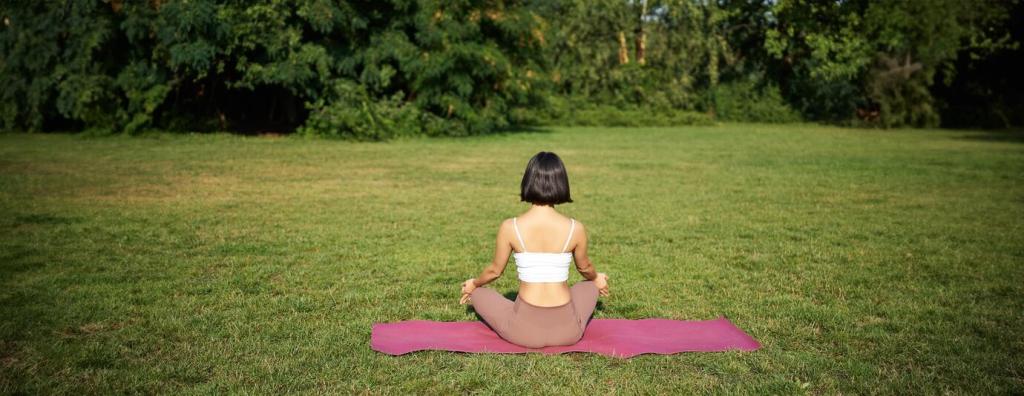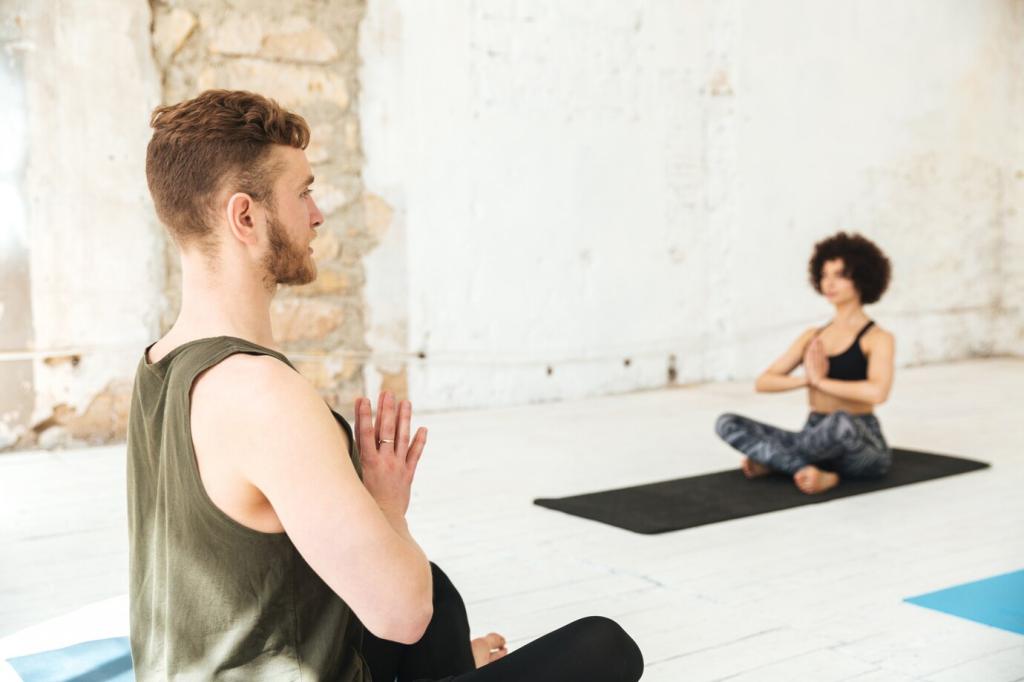
Anchor Awareness in Meditation: Returning to the Steady Point
Chosen theme: Anchor Awareness in Meditation. Welcome to a gentle, practical journey of resting attention on something reliable—like the breath, sound, or contact with the ground—so you can notice distractions kindly and return, again and again, to what is steady. Subscribe to stay inspired and share your experiences.
Why an Anchor Matters
An anchor gives the mind a reliable place to rest when thoughts surge or emotions intensify. It is not a cage but a compass, reminding you where you chose to be. With practice, returning becomes effortless, kind, and deeply stabilizing.
Common Anchors to Explore
Try the feeling of breath in the nostrils, the rise and fall of the abdomen, ambient sounds, contact of feet with the floor, or the weight of the hands. Choose one. Stay curious. If it fades, recontact gently, like greeting a familiar friend.
A Story: The Commuter’s Breath
Maya used her breath as an anchor on a noisy train. Each station, she silently noted inhale, exhale. When announcements blared, she returned to the anchor without self-criticism. Over weeks, crowded mornings felt navigable, and her day began with steadiness.

This is the heading
Lorem ipsum dolor sit amet, consectetur adipiscing elit. Ut elit tellus, luctus nec ullamcorper mattis, pulvinar dapibus leo.

This is the heading
Lorem ipsum dolor sit amet, consectetur adipiscing elit. Ut elit tellus, luctus nec ullamcorper mattis, pulvinar dapibus leo.
The Three-R Approach: Recognize, Relate, Return
Recognize what pulled you—thought, sound, sensation. Relate with friendliness, naming it gently: “planning,” “hearing,” “tingling.” Then return to the anchor without drama. The magic is not gripping the anchor, but learning the graceful art of coming back, again and again.
Dealing with Restlessness
If the body thrums with energy, widen the anchor: include breath, sounds, and contact points simultaneously. Let restless sensations be part of the field, not enemies. Label “energy” once, soften the jaw, exhale longer, and rejoin the anchor in wider awareness.
Handling Sleepiness
Sleepiness blurs the anchor. Sit taller, open your eyes slightly, and switch to a brighter anchor like crisp sounds or cool air at the nostrils. Shorten sessions and increase frequency. Sleepiness is not failure—it is information shaping a wiser routine.

Science Notes on Anchor Awareness
When attention anchors, mind-wandering often decreases. You are training the capacity to notice drifting sooner and to re-engage focus. Over time, this reduces rumination, supporting clarity and presence during everyday tasks like writing emails or speaking with colleagues.
Science Notes on Anchor Awareness
Slow, steady breathing practices can support parasympathetic activity, often linked with relaxation responses. Using breath as an anchor may help regulate arousal, allowing you to meet stress with steadier attention and a more balanced emotional tone.


Anchors Beyond the Cushion
While washing dishes, feel warm water on skin as your anchor. In line at the store, sense both feet grounded. Before opening an email, take one anchored breath. Tiny practices accumulate, transforming ordinary moments into steady training for attention.


Anchors Beyond the Cushion
In dialogue, place attention on the felt sense of your breath while listening. When urges to interrupt arise, note them, return to the anchor, and respond after one full exhale. This simple tether supports empathy, clarity, and fewer reactive misunderstandings.
Design Your Personal Anchor Map
Choosing Primary and Backup Anchors
Pick one primary anchor for seated practice, like breath at the nostrils. Add backups: environmental sounds for fatigue, body contact for anxiety, hand sensations for meetings. Clear choices reduce indecision, so returning becomes immediate, even when conditions shift.
Journaling Sensations and Patterns
After practice, note sensations of your anchor, common distractions, and what helped you return. Track time of day, posture, and energy levels. Over weeks, you’ll discover patterns that refine anchor choice and session length with compassionate, data-informed wisdom.
Evolving Your Practice Over Time
As life changes, so might your anchor. What served during stress may soften during calm. Reassess monthly: Is the anchor vivid? Supportive? Simple? Adjust without guilt. Anchor awareness matures when you meet yourself honestly and keep the practice human and flexible.
